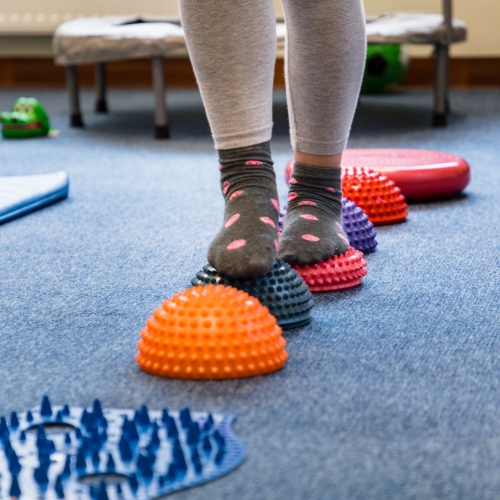Unlock Your Child’s Potential with Specialized Pediatric Physical Therapy at Long Island Physical Therapy
At Long Island Physical Therapy, we work with children ages 5-18 to ensure the best quality of care for each child. From birth, children are eager to play, explore and learn. They learn to explore and interact with their surroundings through rolling, crawling, walking, running and jumping…all through play. It’s the playing that prepares them for adulthood.
We work with children who are facing developmental delays, and have challenges meeting their milestones, making it difficult for them to interact, learn, explore and play. We also create a fun exercise environment where a child can rehab their injury and learn exercises that they can do at home so that they can get back in the game as quickly and safely as possible, while also learning ways to prevent future injuries. Physical therapy is recommended for children who are not meeting their milestones, as well as children who are experiencing physical challenges due to a condition or injury affecting their musculoskeletal system.
Our goal in Huntington Station, NY is to help you and your child live their best life, participate in family routines, play and grow like you would want them to and get them ready for anything. If you believe your child would benefit from physical therapy, request an appointment at Long Island Physical Therapy today.


How Can Physical Therapy in Huntington Station, NY Help?
If your child is experiencing developmental delays in motor skills and milestones, pediatric physical therapy can provide valuable support and intervention. Physical therapy can address concerns such as:
- Lack of head control at 3 months: A physical therapist can assess your child’s head control and provide exercises and techniques to promote strengthening of neck muscles and improve head control.
- Head tilting and flat head at 3 months: Physical therapy can help address asymmetrical head positions, provide guidance on repositioning techniques, and recommend exercises to encourage balanced head movements.
- Delayed rolling over at 6 months: A physical therapist can work with your child to develop the necessary core strength, balance, and coordination for rolling over and progressing to other motor milestones.
- Delayed sitting and crawling at 9 months: Physical therapy can target specific muscle groups and provide activities to promote sitting and crawling, fostering the development of mobility and independence.
- Delayed standing at 1 year: A physical therapist can guide your child through exercises and activities that target strength, balance, and coordination to facilitate standing and weight-bearing.
- Delayed walking at 18 months: Physical therapy can assist in addressing any underlying factors contributing to the delay in walking, providing exercises and techniques to promote balance, coordination, and confidence in independent walking.
- Clumsiness and frequent falls: A physical therapist can evaluate your child’s balance, coordination, and motor skills, implementing interventions to improve stability, body awareness, and overall coordination.
- Difficulty keeping up with peers at the playground: Physical therapy can focus on enhancing strength, endurance, and motor skills to help your child participate in play activities and keep pace with their peers.
Others Pediatric condition that we can help with includes but are not limited to:
- Post fracture rehab following sports injuries and accidental injuries.
- Muscle, tendon and ligamentous sprains and strains.
- Postural abnormalities like scoliosis.
- Headaches following neck muscle weaknesses.
Through personalized assessments, therapeutic exercises, play-based activities, and parental education, pediatric physical therapy can support your child’s development, improve motor skills, and enhance overall functional abilities. Early intervention is crucial for addressing developmental delays, so consider consulting with a pediatric physical therapist to give your child the best opportunity for success and optimal growth.

Invest in Your Child’s Future with Pediatric Physical Therapy – Request an Appointment Today!
At Long Island Physical Therapy, our dedicated team is committed to helping your child unlock their full potential through specialized pediatric physical therapy. From addressing developmental delays and milestone challenges to rehabilitating injuries and promoting injury prevention, we create a fun and engaging environment where your child can grow, learn, and thrive. Our personalized assessments, therapeutic exercises, and play-based activities are designed to enhance their motor skills, boost confidence, and support their overall development. Give your child the best opportunity for success and optimal growth by requesting an appointment at Long Island Physical Therapy in Huntington Station, NY today. Together, let’s ensure your child lives their best life and is ready to take on anything that comes their way.


